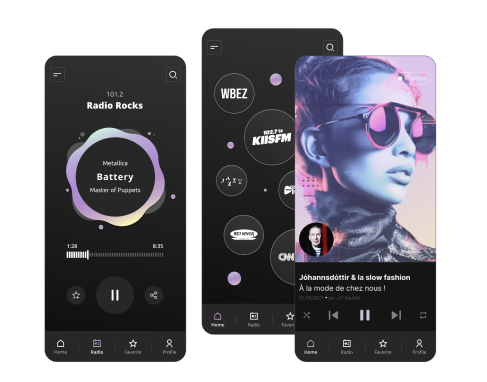Quality Assurance for a Financial Services Company
Ensuring spotless performance, great user experience, and uncompromised safety for a Middle East-based company specializing in banking and financial services.
About Project
Solution
Functional testing, UI/UX testing, Performance testing, Compatibility testing, Confirmation testing, Regression testing
Technologies
BrowserStack, LoadRunner, Selenium, Ranorex, Microsoft Teams, Jira
Country
Middle East
Industry
Client
Our client for this project is a company providing banking and financial services in the Middle East. This is a well-known institution with over 50 years of history and over 140 physical branches in 8 countries that is now venturing into the digital realm with a banking app.
Project overview
Make your app’s quality its standout feature.
Before
- App unprepared for spikes in usage
- Release schedule falling behind
- Security vulnerabilities present
- Not fully compatible with all platforms
After
- App fully tested for any load figures
- Faster and more stable releases
- Advanced access system implemented
- Compatibility tested on 10+ devices
Project Duration
4 months
Team Composition
1 QA Lead
5 Manual QAs
Challenge
By the time the client contacted us for the project, the application had already successfully operated in its home country for several years. However, this year, the company started planning to expand its presence to a new location in the region and decided to update and enhance the original application to better serve customers in the new market. Moreover, the updated application had to fit advanced security requirements, as well as usability and legal regulations, so there was a considerable chunk of work being done by the development team.
During the initial discussions, the client pointed out the most important aspects of the upcoming testing project. Specifically, they needed an application that had an appealing user interface, delivered spotless functionality and performance, and complied with all security requirements and industry standards of the target market. The client also emphasized how important it was to release the product on time so that user adoption would go over smoothly.
The key challenge of the project was the fact that by nature, financial and banking applications deal with a lot of sensitive information. This is why, in order to protect the integrity of the software, the client designed a complex access control system for the testing team. Another challenge was that the mobile application was still in the active development phase, which meant we often had to test various modules separately without yet knowing how they affected each otherâs operation.
Solutions
After getting a clear understanding of the clientâs needs and project requirements, and after taking a few days to familiarize ourselves with the product, we immediately set out to work. To shorten the introduction period and start delivering the results faster, we originally engaged a larger team and then gradually scaled it down to better fit the needs of the project.
Given that the mobile application was not yet fully developed, we had to use a dynamic approach to testing: first, we tested everything that was already available to us, and then, as new modules were added to the application, we also tested them individually and together with the whole system. The client did not previously use a bug tracking system, so we suggested our own template and it perfectly fit every partyâs needs. The types of testing we used on this project included:
- Functional testing
- Cross-platform testing
- UI/UX testing
- Exploratory testing
- Ad hoc testing
- Confirmation testing
- Regression testing
As is always the case with our testing projects, we made sure to test the solution on physical devices: specifically, we used 10+ different iOS and Android smartphones to see how the app would perform on devices with different hardware characteristics and display sizes.
We communicated with the client through bi-weekly team calls and regular messaging and reporting. Our team also built close cooperation with the clientâs development team, which is why we could promptly retest the application after the developers introduced any changes.
Technologies
When approaching a testing project, we pay special attention to the selection of tools and technologies, as the right tech stack can help us reach project goals faster and more efficiently.
- BrowserStack
- Ranorex
- LoadRunner
- Selenium
Types of testing
Exploratory testing
Checking every element of the app with maximum precision.
Cross-platform testing
Evaluating the correct operation of the app on all platforms.
Confirmation testing
Ensuring that the product is fully ready to be released.
Results
The first part of the project, where we completed every requested testing activity, was completed in less than four months. There have been discussions about the next stage, which would involve automation testing and testing new application modules, and we anticipate working with this client again in the near future.

Customer satisfaction score improved

User retention increased

fewer post-release bugs detected

app load time boost
Ready to enhance your product’s stability and performance?
Schedule a call with our Head of Testing Department!
Bruce Mason
Delivery Director


